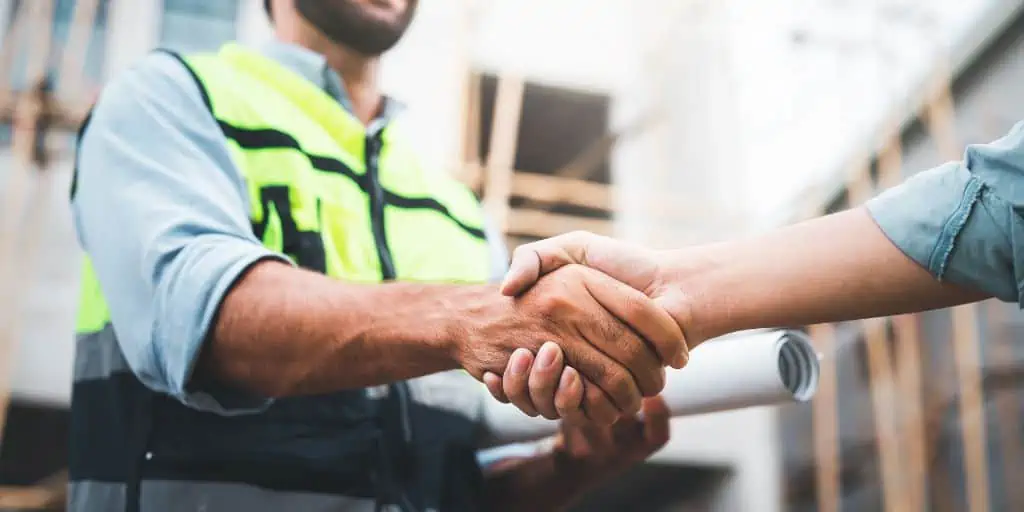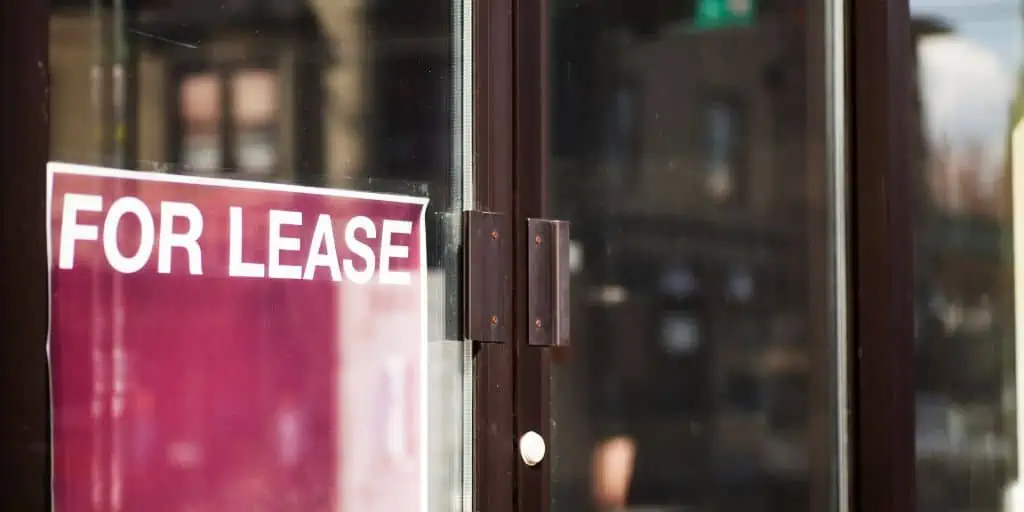What Is a Land Sale-Leaseback?
REtipster does not provide tax, investment, or financial advice. Always seek the help of a licensed financial professional before taking action.
How Does a Land Sale-Leaseback Work?
A land sale-leaseback generally follows the same process as a regular land sale, with some differences.
Suppose Seller A sells their land parcel to an investor, Buyer B. However, the transaction is executed on the agreement that Buyer B will immediately lease the land back to Seller A. Even though the previous owner has received full payment and has given up their equity in the asset, they can remain as an occupant of the land for a designated period.
Other important details included in the sale-leaseback arrangement are the duration of the lease agreement and the payment rate.
A land sale-leaseback arrangement allows Seller A to raise capital and then retain the use of the parcel over a predefined period. In return, the new owner (Buyer B) gets rental income over that period. Buyer B owns the asset and still receives monthly or annual lease payments, ensuring steady cash flow after the sale is complete.
In sale-leasebacks (not just of land), lessors are typically institutional real estate investors, leasing companies, insurers, or financial institutions.
Sale-Leasebacks in Commercial Real Estate
Sale-leaseback transactions are common in commercial real estate, especially among investors looking for unique ways to finance an investment[1]. Commercial sale-leaseback transactions typically involve commercial buildings such as warehouses, multifamily properties, office buildings, and even the land itself.
This arrangement provides incentives to both parties. For example, the original owner wants to free up capital by untying cash in a local warehouse facility. They sell their equity through a sale-leaseback to get the cash they need without getting rid of the income-generating resource. In other words, they improve cash flow while the warehouse’s operations remain uninterrupted.
On the other hand, the investors who bought the land or building now have another asset in their portfolio that generates cash flow through rental income. This diversifies their portfolio[2] and creates a new revenue stream.
Types of Sale-Leasebacks
There are two primary types of sale-leaseback transactions in real estate—operating leases and capital leases (also known as financing leases)[3].
Operational leases are the most common, describing standard lessee/lessor agreements where the original owner gives up property ownership but retains operational control. This arrangement is similar to a landlord and renter contract.
With a capital lease, there is often a buyback provision. This clause allows the seller to buy back the asset at the end of the lease term, but usually at a price lower than its fair market value.
Generally, there are four methods of managing operating expenses in sale-leaseback arrangements[4]:
- Gross Lease — The lessee makes lease payments while the landlord handles significant expenses related to the asset, such as repairs and renovations.
- Net Lease — The lessee is responsible for rent and other running costs. The most common type of net lease agreement in commercial real estate is the triple net lease, where the lessee maintains total control of the property. This makes them responsible for all real estate taxes, insurance payments, maintenance costs on the property, lease payments, and other designated costs. In a single or double net lease, the lessee is only responsible for a portion of those expenses.
- Percentage Lease — Payment for operating expenses is based on the lessee’s gross or net profits. A minimum lease payment is required, so the lessor can still get returns from their asset.
- Variable Lease —Variable leases change based on predetermined conditions, such as an economic index (like the consumer price index). A graduated lease, whose payments increase incrementally, is a type of variable lease.
RELATED: Single, Double, and Triple Net Leases – What’s the Difference?
What Happens at the End of the Lease Term?
Sale-leaseback agreements usually have long lease terms—around 20 to 30 years for commercial real estate properties[5]. This provides ample time for the lessee to decide what to do when the lease ends.
The lessee has a few options upon expiration of the sale-leaseback term, depending on how both parties structured the agreement.
The most straightforward option is to renew the lease. The lessor might be open to lease renewal if the past arrangement was profitable. Another option is to return the property to the lessor and vacate the land with no further obligations.
In some cases, lessees will request an “early buyout” clause to be included in the agreement, so they have the right to repurchase the property at a pre-agreed price before the lease term ends.
Pros and Cons of a Land Sale-Leaseback
A land sale-leaseback agreement has its advantages and disadvantages. However, when designed well, it offers a generally win-win situation for both parties.
Pros of a Land Sale-Leaseback for the Seller/Lessee
- Improved cash flow — A sale-leaseback can free up capital held as equity in the asset. This provides a healthy cash flow injection into the lessee’s operations while allowing them to continue using the asset to generate revenue over the lease term.
- Flexible lease terms — The seller/lessee has more leeway when negotiating the sale-leaseback terms than traditional loans and other conventional financing options. Both parties can agree on mutually beneficial terms without the usual complications and costs of dealing with third parties, such as lawyers and appraisers.
- Off-balance-sheet financing — In a sale-leaseback, the lessee can remove the property’s value and associated debt burden from its balance sheet. Instead, they can list the asset as an operating expense on account of the lease payments. They can also list the net sales proceeds obtained from selling the property without having to report the lease agreement on their balance sheet[6].
- Tax benefits — The seller/lessee can use depreciation as a basis for tax deductions to write off all the lease payments as a business expense[7].
Pros of a Land Sale-Leaseback for the Buyer/Lessor
- Higher rate of return — In a sale-leaseback, the buyer/lessor can skirt state usury laws[8] that apply to most loans and limit how much interest they can charge.
- Immediate, stable returns — As soon as the buyer/lessor leases the land back to the seller/lessee, they can begin to generate income from their investment.
- Possible inflation hedge — For the buyer/lessor, owning income-generating real estate can protect their portfolio against inflation[9].
Cons of a Land Sale-Leaseback for the Seller/Lessee
- Loss of asset ownership — While they can retain use of the asset, the sale-leaseback requires the seller/lessee to relinquish ownership along with other benefits. The new owner may also stipulate that the seller/lessee cannot repurchase the asset at the end of the lease period.
- Required payments — Some former owners may not favor renting property that used to be their own, as they become financially beholden to a landlord.
- Rigid structure — Under a sale-leaseback, the seller-lessee has minimal flexibility in using the asset.
Cons of a Land Sale-Leaseback for the Buyer/Lessor
- Default risk — The entire sale-leaseback agreement hinges on the seller/lessee keeping up with their lease payments and other relevant expenses. If they default, the buyer/lessor is left with an asset that produces no income.
- Vacant property — If the seller/lessee defaults on the agreement, the buyer/lessor can simply terminate the lease and evict them. However, this means they have to find a new tenant, which can be a complex process, especially if the property is for a very specific use.
- Added expenses — Depending on the operating expense management method, the buyer/lessor may find themselves responsible for major expenses on the property.
Takeaways
- A land sale-leaseback is an arrangement in which an investor buys a parcel of land and then leases it back to the seller over an agreed period. Under the terms of this arrangement, the new owner becomes the lessor and the original seller the lessee.
- There are two main types of sale-leaseback transactions in real estate—operating leases and capital leases.
- Sale-leaseback agreements benefit the seller because they can increase their current cash flow while retaining usage rights over the asset. Meanwhile, a sale-leaseback also benefits the buyer because they now own a real estate asset that can generate cash flow from the outset.
Sources
- Understanding Sale Leasebacks in Commercial Real Estate Transactions. (n.d.) Sands Investment Group. Retrieved from https://signnn.com/sale-leasebacks/
- Gobler, E. (2022, January 14). Diversifying Your Portfolio Reduces Your Risk in Investing. Here’s Why That’s So Important. Time. Retrieved from https://time.com/nextadvisor/investing/why-diversifying-portfolio-is-important/
- Schmidt, J. (2022, September 26). Lease Accounting. Corporate Finance Institute. Retrieved from https://corporatefinanceinstitute.com/resources/knowledge/accounting/lease-accounting
- The Four Types of Commercial Leases. (n.d.) The Real Estate Career Resource Center | Aceable. Retrieved from https://www.aceableagent.com/blog/four-types-commercial-leases/
- Valachi, D. (n.d.) Sale-Leaseback Solutions. CCIM Institute. Retrieved from https://www.ccim.com/cire-magazine/articles/sale-leaseback-solutions/
- Sale-Leaseback Transactions: Pros and Cons. (2021, November 4). MasterClass. Retrieved from https://www.masterclass.com/articles/sale-leaseback
- Mitchell, R. (n.d.) Sale-Leaseback of Commercial Real Estate: Pros and Cons. Retrieved from https://www.robertdmitchell.com/sale-leaseback-commercial-real-estate
- Edwards, M., McDonnell, M. (2022, April 19). What Litigators Should Know About Usury Laws. American Bar Association. Retrieved from https://www.americanbar.org/groups/litigation/committees/commercial-business/practice/2022/what-litigators-should-know-about-usury-laws/
- Grimes, P. (2022, April 14). Why Income-Generating Real Estate Is The Best Hedge Against Inflation. Forbes. Retrieved from https://www.forbes.com/sites/forbesbusinesscouncil/2022/04/14/why-income-generating-real-estate-is-the-best-hedge-against-inflation/?sh=29bb972a1746








